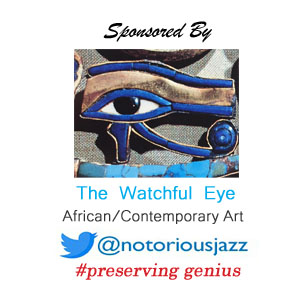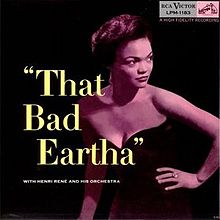
Daily Dose Of Jazz…
Arnold Fishkind, sometimes credited as Arnold Fishkin was born July 20, 1919 in Bayonne, New Jersey. Growing up in Freeport, Long Island, he met and began a lifelong friendship with Chubby Jackson. At age 7, he began learning the violin, and played in The Musical Aces, a local band of budding musicians. By age 14 he was playing bass.
His first professional gig with Bunny Berigan in 1937. In the early Forties, he played with Jack Teagarden, Van Alexander, and Les Brown, however, his career was interrupted by three years of military service during World War II.
The mid-1946 saw Arnold meeting and playing with pianist Lennie Tristano in New York City, but by the fall he left to go to Hollywood to play with Charlie Barnet. During this experience, he played alongside Stan Getz. In 1947 he returned to New York City, where for the next two years he again played with Tristano, and from 1949 to 1951 he recorded with Lee Konitz and on Johnny Smith’s Moonlight in Vermont. He also continued to play with Barnet and played with Benny Goodman.
In the 1950s he became a successful session musician, for radio on Across the Board, television on The Steve Allen Show, and pop musicians including Frankie Laine. His career at ABC lasted fifteen years and included appearances in the Andy Williams Show in 1961. Fishkind became well known enough during this time to be mentioned by Jack Kerouac in his novel Visions of Cody.
With rock and roll decimating the market for jazz musicians in New York City, he moved from New York City back to California, where he found work with Dean Martin and Bob Hope television shows. He also had a few jobs substituting on the Tonight and Merv Griffin television shows, as well as some recording and film work. He toured with Les Brown and Lena Horne. He continued to record into the 1980s, playing with, among others, Frank Scott.
During his career, he performed swing and bebop jazz, television, jingles, and even western-themed music, working with Eartha Kitt, Ella Fitzgerald, Stan Hasselgard, Peanuts Hucko, Charlie Parker, Shorty Rogers, Coleman Hawkins, Hank Jones, Howard McGhee, Miles Davis, Butch Stone, and Jerry Wald. Although there is no mention in the record from whom he learned bass, he gave as his primary influence Jimmy Blanton. Bassist Arnold Fishkind, who never recorded as a leader, passed away on September 6, 1999 in Palm Desert, California.
More Posts: bass,history,instrumental,jazz,music
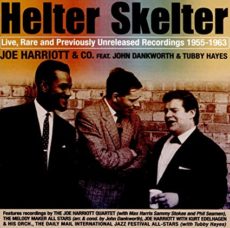
Daily Dose Of Jazz…
Joseph Arthurlin Harriott was born in Kingston, Jamaica on July 15, 1928. Harriott was educated at Alpha Boys School, an orphanage in the city where he learned to play the clarinet, the instrument that was assigned to him shortly before his tenth birthday. He took up the baritone and tenor saxophone while performing with local dance bands before settling on the alto saxophone.
Moving to London, England as a working musician in the summer of 1951 at the age of 23 as a member of Ossie Da Costa’s band, he initially began as a bebopper, and also became a pioneer of free-form jazz. Harriott was part of a wave of Caribbean jazz musicians who arrived in Britain during the 1950s, including Dizzy Reece, Harold McNair, Harry Beckett and Wilton Gaynair.
Deeply influenced by Charlie Parker, he developed a style that fused Parker with his own Jamaican musical sensibility, most notably the mento and calypso music he grew up with. During the 1950s, he had two long spells with drummer Tony Kinsey’s band, punctuated by the membership of Ronnie Scott’s short-lived big band, occasional spells leading his own quartet and working in the quartets of drummers Phil Seamen and Allan Ganley.
Harriott began recording under his own name in 1954, releasing a handful of E.P. records for Columbia, Pye/Nixa and Melodisc throughout the 1950s. However, the majority of his 1950s recordings were as a sideman with the musicians previously mentioned, also backing a diverse array of performers, from mainstream vocalist Lita Roza to traditional trombonist George Chisholm to the West African sounds of Buddy Pipp’s Highlifers. Harriott also appeared alongside visiting American musicians during this period, including a “guest artist” slot on the Modern Jazz Quartet’s 1959 UK tour.
Forming his own quintet in 1958, Joe’s hard-swinging bebop was noticed in the United States, leading to the release of the Southern Horizons and Free Form albums on the Jazzland label. By now firmly established as a bebop soloist, in 1960 Harriott turned to what he termed “abstract” or “free-form” music. During the late 1960s he and violinist John Mayer developed Indo-Jazz Fusion – an early attempt at building on music from diverse traditions. His work in 1969 was to be the last substantial performance of his career.
While he continued to play around Britain wherever he was welcome, no further recording opportunities arose. He was virtually destitute in his last years and ravaged by illness. Alto saxophonist and composer Joe Harriott passed away from cancer on January 2, 1973.

More Posts: bandleader,composer,history,instrumental,jazz,music,saxophone
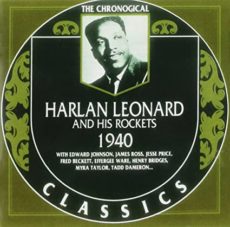
Daily Dose Of Jazz…
Harlan Leonard was born on July 2, 1905 in Kansas City, Missouri. He started his career in the Territory Band of George E. Lee in 1923, then moved to Benny Moten in 1924 and joined Thamon Hayes ‘ Kansas City Rockets in 1931 with several other musicians from the band. Disbanded in 1934, they formed the basis of the new Moten Orchestra. After Moten’s death in 1935, Leonard founded his own group, bringing several Moten musicians which became Harlan Leonard and his Rockets, and soon was one of the most famous bands in Kansas City.
After Count Basie’s departure for new YorkCity, he and Jay McShann were the strongest rivals. When the first Leonard band fell apart in 1936, he then took over the musicians of the Jimmy Keith band in 1937/38. In 1938 the young Charlie Parker also belonged to the band for five weeks but was dismissed because of unreliability.
In Chicago, Illinois in 1940, the band along with singer Myra Taylor recorded sessions for Victor Records. Returning to Kansas City in 1941, they toured the Midwest, then went to New York City but were unsuccessful so they returned home. Early 1943 Leonard went on a West Coast tour, playing one-nighters and a year engagement in Los Angeles, California.
After the band’s disbandment, Leonard remained in the Los Angeles area, performing occasionally in local clubs until retiring from the music business and working for the Internal Revenue Service.
Clarinetist, saxophonist, and Swing bandleader Harlan Leonard, who was one of the leaders of Kansas City Jazz with Jay McShann, and one of the links between the swing and the subsequent bebop, passed away on November 10, 1983.
More Posts: bandleader,clarinet,history,instrumental,jazz,saxophone
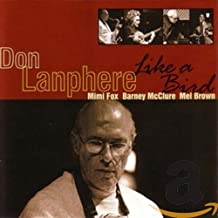
Daily Dose Of Jazz…
Donald Gale Lanphere was born on June 26, 1928 in Wenatchee, Washington and briefly studied music at Northwestern University in the 1940s, but moved to New York City as a member of Johnny Bothwell’s group and became part of the bebop jazz scene. While in New York, he was in a relationship with Chan Richardson, who later married Charlie Parker and then Phil Woods.
1951 saw Don arrested and charged with heroin possession in New York City. After his release from jail, he worked in his family’s music store in Wenatchee, where he met Midge Hess, whom he married in 1953. By the late 1950s and early 1960s he performed with Herb Pomeroy and with Woody Herman.
Throughout most of the 1960s Lanphere was mostly inactive musically but began performing around the Seattle, Washington area after becoming a born again Christian in 1969, at which time he also stopped using drugs and alcohol. It wasn’t until the 1980s that he would begin recording again and started releasing albums. He toured in New York City and Kansas City in 1983 and a Europe in 1985.
His later years, had Don as a jazz educator in the Pacific Northwest, giving lessons out of his home in Kirkland, Washington. He instructed clinics and small groups, as well as performing at the Bud Shank Jazz Workshop, an annual, week-long summer camp in Port Townsend, Washington for jazz students of all ages. The workshop coincided with the annual Port Townsend Jazz Festival.
He led thirteen recording sessions as well as Fats Nava Jazz Orchestrarro and the Seattle Repertory Jazz Orchestra. Tenor and soprano saxophonist, bandleader, and educator Don Lanphere passed away on October 9, 2003.
More Posts: bandleader,history,instrumental,jazz,music,saxophone

Daily Dose Of Jazz…
Hank Shaw was born Henry Shalofsky on June 23, 1926 in London, England and played with Teddy Foster’s band during World War II at the age of 15. In the latter half of the decade, he played in London with Oscar Rabin, Frank Weir, and Tommy Sampson, then switched permanently to playing bebop music in 1946 after hearing Dizzy Gillespie.
A visit to the United States in 1947 with close friend and fellow pioneer bebopper alto saxophonist Freddy Syer, preceded their move to Canada after he was unable to secure a work permit. There they played with Oscar Peterson and Maynard Ferguson before returning to England in 1948. He was one of the early Club Eleven players, along with Ronnie Scott, John Dankworth, Lennie Bush, and others. He also played with many of these musicians on the recordings of Alan Dean’s Beboppers.
After Club Eleven shuttered, Shaw played with Vic Lewis and toured Europe with Cab Kaye, then joined Jack Parnell’s ensemble in 1953 and Ronnie Scott’s nonet in 1954. He went on to play regularly both live and as a session musician for many British jazz musicians over the course of the next twenty or so years, working with Joe Harriott, Tony Crombie, Don Rendell, Tony Kinsey, Stan Tracey, Bill Le Sage, and others.
In the Sixties, he led a quartet at the 100 Club and played in the Bebop Preservation Society and the John Burch Quartet for over two decades each. Retiring from music due to ill health in the late 1990s, trumpeter Hank Shaw passed away on October 26, 2006 in Kent, four months past his 80th birthday.
More Posts: history,instrumental,jazz,music,trumpet


